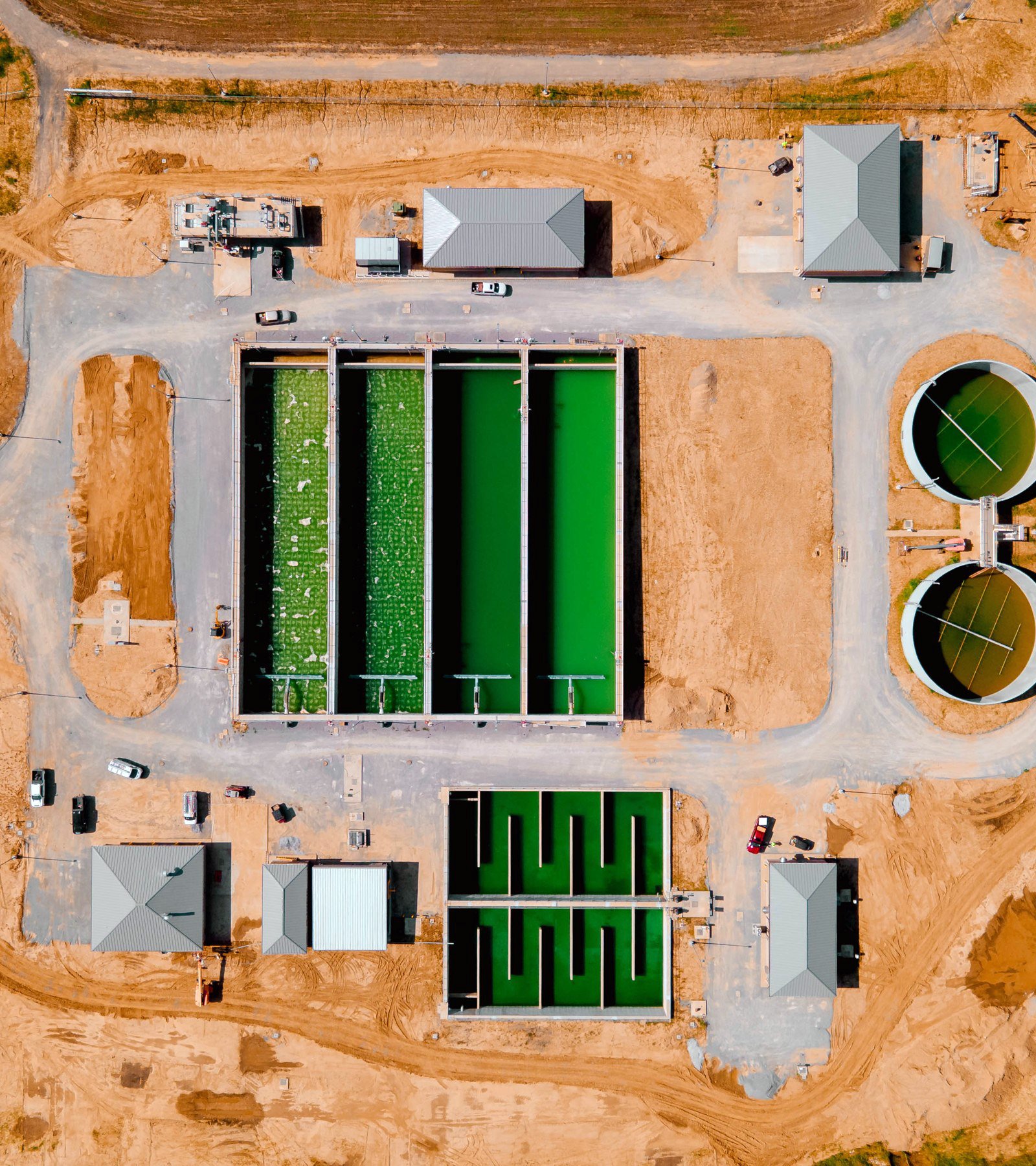Dry Creek Wastewater Treatment Biosolids Management Plan
Decatur, AL
Decatur Utilities in northeast Alabama owns and operates the Dry Creek Wastewater Treatment Plant (WWTP). This facility receives and treats both domestic and industrial wastewater from the City and the surrounding area. Treated effluent from the WWTP is discharged directly to the Tennessee River. Treated biosolids and aluminum coagulant sludge from the Decatur Water Treatment Plant (WTP) are separately dewatered, combined in a common holding vessel, and transported to a sanitary solid waste land fill for disposal. This facility uses a complete mix, activated sludge, wastewater treatment process to treat the wastewater to the effluent limits of the facility’s NPDES permit.
Decatur Utilities contracted with Ardurra (fka Constantine Engineering) to perform an assessment of the existing biosolids treatment and disposal processes at the Dry Creek WWTP and develop a long-range Biosolids Management Plan. This assessment was to identify any deficiencies and “bottle-necks” that existed in the solids handling processes and to provide recommendations for modifications to the solids handling processes, operations, and equipment that would result in optimal treatment and disposal of the biosolids generated at the WWTP, resulting in a cost benefit to DU. Polymer selection and usage was a major component of the project tasks.
DU also had recently determined that the dewatered biosolids produced at the WWTP contained concentrations of perflourochemicals (PFCs). PFCs are manufactured chemicals that were discharged to DU’s wastewater collection system by some of the local industries and were conveyed to the Dry Creek WWTP. When PFCs were detected in several rural residential wells, and in response to an EPA health advisory on PFCs, DU immediately suspended its application of biosolids to agricultural lands. Currently, dewatered biosolids and coagulant sludge are transported to a sanitary solid waste landfill for disposal. However, the landfill operators are limiting the amount of biosolids that DU may dispose at the landfill because they too have concerns about the potential for PFC contamination of the aquifer in the vicinity of the landfill.
The solids processes include waste activated sludge (WAS) thickening, combined primary sludge and thickened WAS primary anaerobic digestion, and secondary anaerobic digestion. Secondary digested sludge (biosolids) was previously dewatered using belt filter presses (BFP) and then transported to a solids waste landfill for disposal. The biosolids treatment process is designed to produce a Class B sludge that is suitable for restricted access land application as defined in 40 CFR Part 503.
The scope of services for completing the Biosolids Management Plant included the following:
- Developed dewatering and disposal alternatives for evaluation and comparison
- Developed design criteria for each alternative, including optimization of power, chemicals, dosage, and function
- Prepared a summary of comparative information including costs, equipment data sheets, operating requirements, and advantages and disadvantages
- Provided short-term and/or long-term improvement recommendations
- Presented study results and recommendations in a report and presented the long-range plan in the Biosolids Management Plan
The biosolids train at the Dry Creek WWTP includes five (5) primary/secondary anaerobic digesters. The anaerobic digestion system processes more than 35 tons per day of volatile solids and can generate more than 100,000 cubic feet per day of methane biogas when the digestion system is operating correctly. Decatur uses gas-fired boilers to heat water for anaerobic sludge heating, but before this project, operators had switched to natural gas fuel. The digesters were poorly mixed with low VSS destruction, resulting in poor biogas production. Furthermore, the gas quality created maintenance issues within the boiler tubes because of insufficient gas scrubbing and cleaning.
Ardurra developed adequate design criteria for anaerobic digestion, VSS destruction, and biogas production, scrubbing, compression and storage. Because the biogas is used as a naturally occurring source of energy, Ardurra was able to secure EPA grant funding as a green project. The solids treatment process improvements included the following:
- New rotary drum thickeners for thickened WAS
- New digester mixing and heat-exchange system
- New gas scrubbing
- Replacement of the existing belt presses with Andritz centrifuges
- New polymer system for dewatering
- Future gas-fired solids drying
- Future monofill solids disposal
The services provided for the project included the grant application, permitting, preliminary design, final design, bid services, and services during construction. Following the completion of the project, the Dry Creek WWTP returned to the use of methane biogas as the fuel for hot water boilers, saving Decatur more than $150,000 per year.






